Munaðarvara og matarmenning: pöntunarvara árið 1784.
Ártal:
Bls:
DOI:
Efnisorð:
Á Ríkisskjalasafninu í Kaupmannahöfn hefur varðveist verslunarbók sem sýnir innflutning sérpantaðrar vöru til Íslands frá árinu 1784, eða frá tíma hinna mannskæðu móðuharðinda. Hluti hins sérpantaða varnings var matvara, svo sem fíkjur, þurrkuð kirsiber og ostar, en einnig húsbúnaður, fatnaður og skartgripir: postulín, pelsar og gullhringar. Í þessari grein verður áhersla lögð á að skoða matarmenningu landsins út frá þessari heimild og einnig vikið að því hvaða mynd hún gefur af sérpöntunum og munaðarvöruinnflutningi landsmanna undir lok 18. aldar. Verslunarbókin tekur til alls landsins og veitir innsýn í hvaða félagshópar pöntuðu munaðarvarning til hinna 25 hafna landsins. Hún er einstæð heimild um mataræði 18. aldar, lifnaðarhætti og byggðamenningu.
LUXURY GOODS AND FOOD CULTURE IN THE ICELAND OF 1784
Food grains, spices, fruits, utensils, tools, paper, furniture, clothes, tableware, jewellery, vegetable seeds and medicinal products were all among the specially ordered imports to Iceland in 1784. At that time, the Second Royal Trading Company (1774–1787) had a monopoly on Icelandic trade. New commercial rates had been issued in 1776. While the new rates covered the main necessities, including over a hundred goods, hundreds more were imported in 1784 to meet special orders. Information on such orders has been preserved in a separate business ledger in the archives of the Royal Trading Company, kept at the Danish State Archives in Copenhagen. The unique insights which this ledger offers allowed for the present analysis of luxury and specially ordered imports, in an effort to note what such imports might reveal about social structure and regional culture in late 18th-century Iceland. Focusing the analysis on specially imported foodstuffs shows they were indeed luxury items, and were more in line with what was available among the upper classes in Copenhagen than what was common in Iceland. As for tools and equipment bought by special order, they were often urgently needed for agriculture or other employment and were fairly evenly distributed throughout the country. While public officials, merchants, craftsmen, major landowners and some members of the clergy were among the customers ordering, the largest number were Icelanders without status. Danes at the trading harbours were also conspicuous in the ledger. There is a marked geographical distinction, however, in the type and quantities of specially ordered foodstuffs imported to different harbours. While rather few such articles were brought to North and East Iceland, Reykjanes and Snæfellsnes, significantly larger quantities were imported to Hofsós, the Westman Islands, Hafnarfjörður, Hólmur, Flatey, and the West Fjords harbours of Patreksfjörður and Bíldudalur. Analysing the consumer goods imported to the Westman Islands, Flatey and Patreksfjörður indicates that the social and cultural standing of their residents contrasted to that of surrounding communities. The food products imported on special order were quite different from what was customary among common people.

